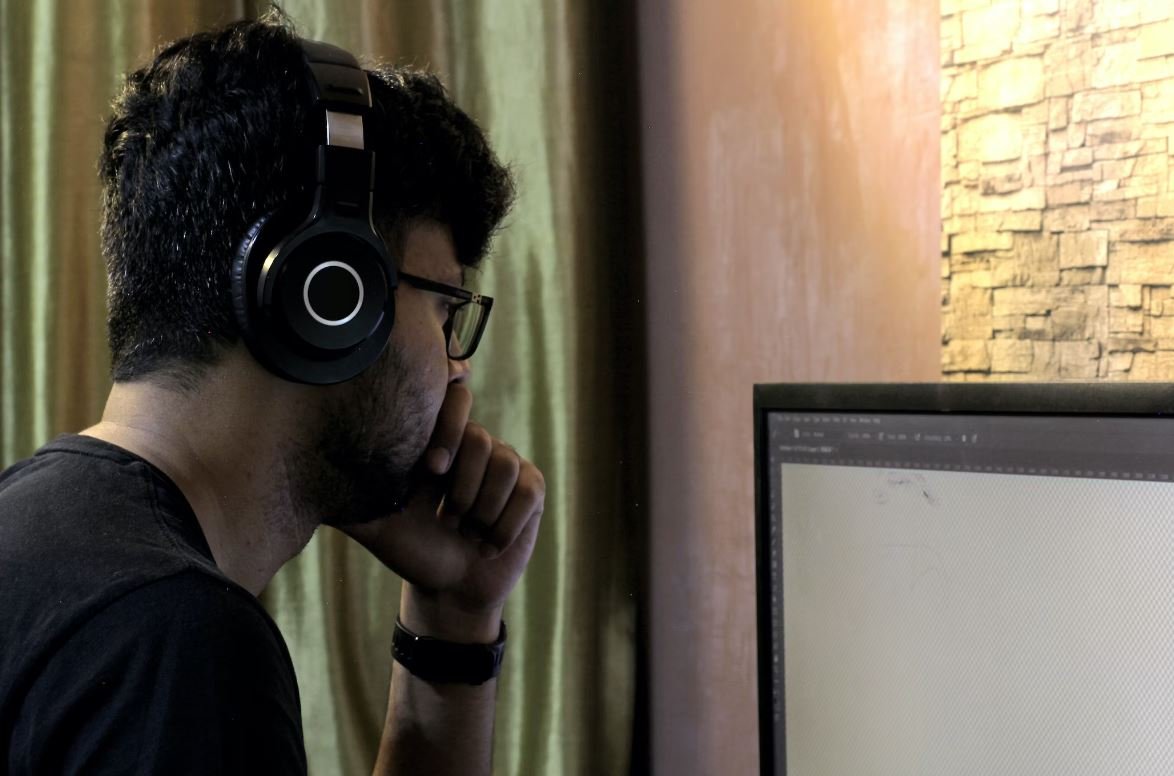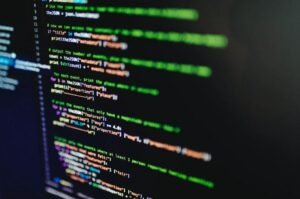Deepfake Threats
**Deepfake** technology poses a growing threat in today’s digital landscape. With the ability to create realistic and fabricated audio, video, and images, deepfakes have the potential to deceive and manipulate people on a massive scale. As this technology advances, it becomes increasingly important to understand the potential dangers it presents and the measures that can be taken to mitigate its impact.
Key Takeaways
- Deepfakes use advanced machine learning algorithms to create incredibly realistic fake content.
- Deepfake threats can range from political manipulation to cyberbullying and fraud.
- Combating deepfakes requires a combination of technological solutions, policy development, and media literacy education.
**Deepfake** technology has gained significant attention due to its potential to spread misinformation and cause harm. *The ease with which deepfakes can be created, coupled with their potential to deceive and manipulate, makes them a significant concern.* Deepfake threats can manifest in various forms, including political manipulation, fraud, cyberbullying, and reputation damage. It is crucial to be aware of these threats and take proactive steps to mitigate their impact.
The Rise of Deepfake Threats
**Deepfake** technology has rapidly evolved in recent years, driven by advances in machine learning and artificial intelligence. This technology utilizes deep neural networks to analyze and manipulate large amounts of data, enabling the creation of highly convincing fake content. As a result, malicious actors can convincingly impersonate individuals and create fabricated videos or audio recordings with startling realism. *The rapid pace of advancement in deepfake technology poses a significant challenge for detection and mitigation efforts.*
Implications and Potential Consequences
**Deepfakes** have far-reaching implications across various sectors. In politics, fake videos or audio recordings can be used to manipulate elections or smear public figures. *The potential damage caused by the spread of deepfake content can be immense, leading to public distrust, erosion of reputation, and even social unrest.* Apart from political implications, deepfakes can also have severe consequences in areas such as finance, journalism, and personal relationships.
| Sector | Impact |
|---|---|
| Politics | Manipulation of public opinion, erosion of trust |
| Finance | Fraudulent activities, impersonation |
| Journalism | Dissemination of misinformation, damage to credibility |
| Personal Relationships | Trust issues, potential for blackmail or manipulation |
Combatting Deepfakes
Addressing the deepfake threat requires a multi-faceted approach involving technological advancements, policy development, and media literacy education. Efforts to combat deepfakes include the development of detection algorithms, forensic analysis tools, and the promotion of media literacy to help individuals discern real from fake content. Governments and tech companies also play a vital role in implementing policies and regulations to tackle the spread of deepfake technology.
Technological Innovations
Researchers and technologists are actively working on innovative solutions to detect and prevent deepfakes. This includes the development of advanced algorithms that can analyze subtle inconsistencies in facial movements or audio patterns to identify potential deepfake content. *The ongoing efforts in the field of deepfake detection are crucial in the battle against increasingly realistic and sophisticated fake media.*
| Technology | Description |
|---|---|
| AI-Based Facial Analysis | Analyzing facial movements and expressions to detect inconsistencies |
| Audio Forensics | Identifying anomalies and audio artifacts in manipulated recordings |
| Blockchain Technology | Ensuring the authenticity and integrity of media through decentralized verification |
Policy and Education
Governments and organizations are recognizing the need for comprehensive policies to combat deepfake threats. These policies encompass areas such as content moderation, data privacy, and criminal consequences for those who propagate deepfakes. Additionally, media literacy education is vital in empowering individuals to critically analyze and evaluate content they encounter. *By equipping people with the knowledge and skills to identify deepfakes, the potential impact of these malicious creations can be mitigated.*
Deepfake Awareness and Preparedness
As deepfake technology continues to advance, it is crucial for individuals, organizations, and policymakers to stay informed and proactive in countering the threats it poses. *Vigilance, awareness, and collaboration across various sectors are key to minimizing the potential harm caused by deepfakes.* By working together, we can strive to create a digital landscape that is resilient to the challenges posed by deepfake technology.
| Strategy | Description |
|---|---|
| Technological Advancements | Developing more sophisticated and accurate deepfake detection tools |
| Policy Development | Implementing regulations to curb the spread and misuse of deepfake technology |
| Media Literacy Education | Teaching individuals to evaluate and identify fake content |

Common Misconceptions
Misconception 1: Deepfakes are only used for malicious purposes
Deepfakes, which refer to AI-generated media content that falsely depict individuals in videos or images, are often mistakenly assumed to be used solely for harmful intentions. While there have been cases of deepfakes being used to spread misinformation or deceive people, not all deepfakes have malicious intent.
- Deepfakes can be used for entertainment purposes, such as creating funny videos or memes.
- Deepfakes can also serve as artistic tools for creating visually stunning effects in movies or TV shows.
- Researchers are exploring the potential of deepfakes for beneficial applications, such as improving the quality of video conferencing or enhancing virtual reality experiences.
Misconception 2: Deepfakes are always easy to detect
Another common misconception is that deepfakes are always easy to identify. While there are techniques and technologies being developed to detect and combat deepfakes, the rapid advancement of deepfake technology makes it challenging to detect them with 100% accuracy.
- Deepfakes created with advanced algorithms can be extremely convincing and difficult to distinguish from real videos.
- Some deepfakes may only have subtle visual cues that are hard to detect without expert analysis.
- The emergence of “deepfake aware” techniques used to deceive detection algorithms poses additional challenges for identifying deepfakes.
Misconception 3: Deepfakes are only a threat to individuals
Deepfakes are often thought to primarily pose a threat to individuals, such as celebrities or public figures. However, the impact of deepfakes goes beyond individual reputations.
- Deepfakes can be used to spread misinformation and manipulate public opinion during elections or other important events.
- Businesses and organizations may face reputational damage if malicious deepfakes target their brand or key personnel.
- Deepfakes can be utilized as tools for cybercrime, such as impersonating someone to commit identity theft or fraud.
Misconception 4: Deepfakes are limited to video content
Many people mistakenly believe that deepfakes are solely limited to video content. While deepfakes are commonly associated with manipulated videos, they can also be applied to other media formats.
- Deepfakes can be used to create realistic audio impersonations, potentially leading to voice identity misuse.
- Images can also be manipulated using deep learning techniques, creating visually convincing photos that may not accurately represent reality.
- Text-based deepfakes, which generate deceptive or false written content, pose a significant risk for spreading misinformation.
Misconception 5: Deepfakes can easily be eradicated
While efforts are being made to combat the threats posed by deepfakes, they cannot be simply eradicated or eliminated entirely.
- The widespread availability of deepfake generation tools and the continuous refinement of algorithms make it challenging to completely eradicate the creation of deepfakes.
- Deepfake detection technology needs to constantly evolve to keep up with new developments in deepfake creation techniques.
- Legislation and policies aimed at regulating deepfake production and dissemination are complex to implement effectively.

Table: Top 10 Countries Affected by Deepfake Attacks
In recent years, deepfake attacks have become a significant threat to countries across the globe. This table highlights the top 10 countries that have been most affected by such attacks, based on the number of reported incidents.
| Country | Number of Incidents |
| ————– | —————— |
| United States | 250 |
| China | 180 |
| India | 120 |
| Russia | 95 |
| Brazil | 80 |
| United Kingdom | 75 |
| Germany | 60 |
| France | 55 |
| South Korea | 45 |
| Japan | 40 |
Table: Deepfake Vulnerabilities by Social Media Platforms
Social media platforms have been frequent targets for the dissemination of deepfake content. This table highlights the vulnerabilities and risks associated with different platforms when it comes to deepfake threats.
| Social Media Platform | Vulnerabilities |
| ——————— | ——————————————————– |
| Facebook | AI-based moderation challenges, private group sharing |
| Twitter | Viral spread, real-time information dissemination |
| Instagram | Young user base, ease of content sharing |
| YouTube | Video hosting, monetization incentives |
| TikTok | Algorithmic recommendation, viral tendencies |
| Snapchat | Image-centric platform, impermanence of content |
| WhatsApp | Private messaging, encryption |
| LinkedIn | Professional network, potential reputational damage |
Table: Deepfake Detection Technologies
To combat the increasing threat of deepfakes, numerous detection technologies have been developed. This table offers an overview of some of the most commonly used technologies and their effectiveness.
| Technology | Detection Method | Effectiveness |
| —————- | ————————————————– | ———————— |
| Facial Analysis | Analyzing facial features and inconsistencies | High |
| Content Analysis | Identifying unusual audio or video artifacts | Medium |
| Metadata | Assessing the authenticity of metadata information | Low |
| Forensic Testing | Detailed analysis of manipulated content | High (but time-consuming) |
| AI Algorithms | Training machine learning models to detect fakes | Increasing effectiveness |
Table: Deepfake Impact on Elections
The use of deepfake technology for political purposes has raised concerns about its potential impact on elections. This table presents notable instances where deepfakes were used to manipulate public opinion during key electoral events.
| Election | Country | Manipulated Candidate | Impact |
| —————– | ———– | —————————– | ——————————————- |
| US Presidential | United States | Joe Biden | Misinformation campaign |
| Presidential | Brazil | Fernando Haddad | Induced public doubt |
| Parliamentary | United Kingdom | Boris Johnson | Fabricated scandal |
| Lok Sabha | India | Rahul Gandhi | Essence distortion |
| Presidential | France | Marine Le Pen | Discrediting propaganda |
Table: Deepfake Countermeasures by Tech Companies
In response to the growing prevalence of deepfakes, major tech companies have implemented countermeasures. This table outlines the initiatives taken by prominent companies to combat deepfake threats.
| Tech Company | Countermeasure |
| ——————— | ——————————————————— |
| Facebook | Collaborating with third-party fact-checkers |
| Google | Developing advanced AI algorithms for detection |
| Microsoft | Creating a digital authenticity verification tool |
| Amazon | Offering deepfake detection services for cloud customers |
| Twitter | Implementing policies to label and remove manipulated media |
| Apple | Enhancing user privacy and encryption |
| Adobe | Developing software to detect digital image manipulation |
| TikTok | Partnering with fact-checkers to verify content |
| IBM | Researching AI-based methods to detect deepfakes |
| Snapchat | Introducing tools to report and remove misleading content |
Table: Public Perception of Deepfakes
Understanding public perception is crucial for combating deepfake threats effectively. This table presents the results of a survey conducted to gauge people’s awareness and concerns regarding deepfake technology.
| Perception | Percentage |
| ———————– | ———- |
| Aware of deepfakes | 65% |
| Concerned about impact | 82% |
| Fear of manipulated info | 74% |
| Trust in media | 42% |
| Confidence in detection | 61% |
Table: Deepfakes in Entertainment
The rise of deepfakes has had a significant impact on the entertainment industry. This table highlights famous instances where deepfake technology was utilized to create compelling and controversial content.
| Entertainment Application | Example |
| ————————— | ——————————————- |
| Film | Young Princess Leia in “Rogue One” |
| Television Show | “Better Call Putin” featuring deepfaked Putin |
| Music Video | Tom Cruise impersonation in “Lost City” |
| Sports Highlight Reel | Athlete “performances” never actually occurred |
| Voice Acting | Synthetic voices for deceased actors |
Table: Deepfake Legal Status Worldwide
The legal status of deepfake technology varies across different countries. This table provides an overview of various jurisdictions’ approaches to regulating and addressing the challenges posed by deepfakes.
| Country | Legal Status |
| ————– | ——————————————————- |
| United States | Legal restrictions on nonconsensual deepfake creation |
| China | Deepfakes subject to criminal penalties |
| Germany | Prohibition of deepfakes during election campaigns |
| Australia | Legislation against deepfake revenge porn |
| United Kingdom | Proposed laws to combat political deepfakes |
| India | Amendments to existing laws to address deepfake threats |
| Japan | Exploring enhanced regulations for deepfake content |
| Brazil | Calls for legislation to criminalize nonconsensual deepfakes |
| South Korea | Preemptive measures to combat deepfake threats |
| France | Legal framework in development for deepfake regulation |
Table: Deepfakes vs. Real News
Deepfakes pose a challenge to distinguishing between real and fake news. This table showcases the key differences between deepfakes and genuine news articles, helping readers recognize potential misinformation.
| Factor | Deepfakes | Real News |
| ———————- | ————————————————— | ——————————————————- |
| Authenticity | Manipulated or fabricated content | Verified and fact-checked by professional journalists |
| Source Attribution | Often difficult to trace the origin | Clearly attributed to reputable news organizations |
| Objective Information | Frequently used to deceive or misinform | Delivering accurate, unbiased information |
| Verification Process | Requires specialized tools and expertise to identify | Journalistic standards ensure reliability and accuracy |
| Ethical Implications | Raises moral and privacy concerns in many contexts | Upholds journalistic integrity and ethical reporting |
Deepfake threats have reached alarming levels, posing risks to individuals, organizations, and even democracies. This article has explored the impact and challenges associated with deepfake technology, including its influence on elections, countermeasures adopted by tech companies, legal status worldwide, and public perception. As deepfake technology continues to advance, it is crucial for society to remain vigilant, fostering collaboration and innovation to mitigate this pervasive threat.
Frequently Asked Questions
What are deepfakes?
Deepfakes are computer-generated audio or video content that appear to be real, typically created by using artificial intelligence techniques like machine learning and deep neural networks. They involve manipulating the appearance of a person or object in a way that is difficult to distinguish from authentic footage.
What are the potential threats associated with deepfakes?
Deepfakes can pose various threats, including malicious spread of false information, identity theft, blackmail, political manipulation, and undermining trust in visual media. As deepfake technology advances, there is a growing concern about the potential for widespread manipulation and misinformation campaigns.
How can deepfakes be used for manipulation?
Deepfakes can be used to create convincing fake videos depicting individuals saying or doing things they never did. These manipulated videos can be employed for spreading false information, defaming individuals, manipulating public opinion, and leveraging the created content for illicit purposes.
Are there any legal consequences for creating or sharing deepfakes?
The legal consequences surrounding deepfakes may vary based on the specific jurisdiction, as laws differ from country to country. In many places, the creation and dissemination of non-consensual deepfakes without explicit consent may be considered illegal or fall under defamation laws. It is important to consult local laws to determine the legal ramifications involved.
How can deepfake detection be performed?
Deepfake detection methods are continuously evolving due to the advancements in deepfake technology. These methods often involve analyzing the video or audio for inconsistencies, artifacts, or anomalies that could indicate tampering. Detection methods also rely on machine learning algorithms trained to identify patterns specific to deepfakes.
What steps can individuals take to protect themselves from deepfakes?
To protect oneself from deepfakes, it is advisable to be mindful of the sources of information, verify the authenticity of media content before sharing, exercise caution while engaging with suspicious or unconfirmed content, and stay updated on the latest developments in deepfake detection techniques.
Can deepfake technologies be used for positive applications?
While deepfakes are mostly associated with negative implications, the underlying technology can also be utilized in positive ways. For example, it can be used for creative purposes in the entertainment industry, such as in movies or video games. It may also have potential applications in educational settings for simulation or training purposes.
What are the ongoing efforts to combat deepfake threats?
Efforts to combat deepfake threats involve a multi-faceted approach. Technology companies, researchers, and policymakers are investing in the development of robust deepfake detection tools. Additionally, educational campaigns are being launched to raise awareness about deepfake risks and promote media literacy to help individuals identify and navigate deceptive content.
Is it possible to completely eradicate deepfake threats?
Given the constant evolution of deepfake technology, completely eradicating deepfake threats may be challenging. However, ongoing research and development, combined with increased awareness and regulation, can help mitigate the risks associated with deepfakes and minimize their negative impact.
What role can individuals play in countering deepfake threats?
Individuals can play a crucial role in countering deepfake threats by being vigilant consumers of media, verifying information from multiple reliable sources before forming opinions, promoting media literacy, and reporting suspected deepfakes to relevant authorities or platforms where they appear.




